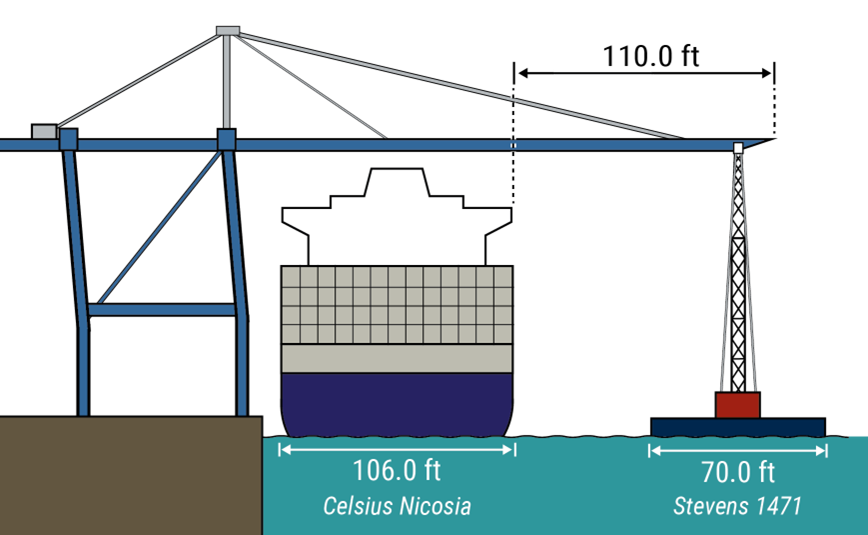(WASHINGTON) — The mast of a crane barge hit a North Charleston Terminal ship-to-shore crane while the ship-to-shore crane was conducting cargo operations in North Charleston, S.C., last year, the National Transportation Safety Board (NTSB) said Wednesday. The contact resulted in over $4.5 million in damage to the ship-to-shore crane.
The towing vessel Royal Engineer was transiting the Cooper River while pushing crane barge Stevens 1471 on Jan. 4, 2024, when the barge’s crane contacted a ship-to-shore crane. The towing vessel was maneuvering through a narrow area between the docked containership Celsius Nicosia and a dredging vessel. The dredge’s floating discharge pipeline was blocking the rest of the channel.
The Royal Engineer mate was aware of the dredging operations along the tow’s transit route and had transited the area the day before. The mate told investigators that, on the day of the contact, he attempted twice to contact the dredge crew early to make passing arrangements, but was not able to establish communications until about 15 minutes before the Royal Engineer tow reached the dredging area.

The mate told investigators that his original intention was to request that the dredge “break the pipeline” so the tow could pass to the east of the dredge. However, the dredge captain’s preference was for the tow to pass to the west of the dredge. The two agreed the tow would proceed through the narrow area between the dredge and the containership.
While completing the passing arrangements, the Royal Engineer mate did not realize the ship-to-shore crane extended over the side of the containership and impeded the tow’s route. Had the Royal Engineer mate been aware of the ship-to-shore crane boom extending beyond the containership when he was determining passing arrangements, he likely would have realized the crane was a potential overhead hazard and made a plan to avoid it.
“Ship-to-shore cranes, when conducting cargo operations on a vessel and in the lowered position, may extend considerably beyond the side of the vessel and become a hazard to vessels with high air drafts transiting nearby,” the report said. “Mariners should always consider their vessel and tow’s air draft when identifying hazards to navigation.”
Click here to read the complete report.
– National Transportation Safety Board

